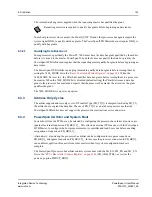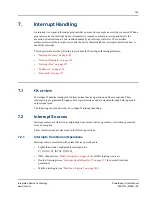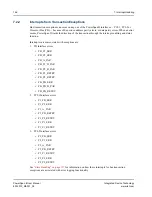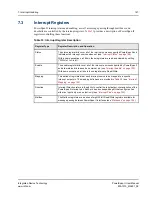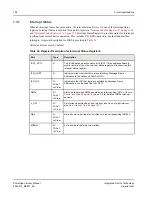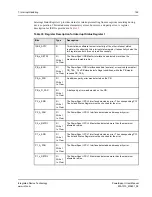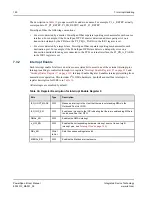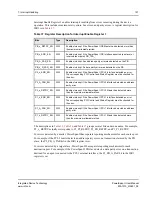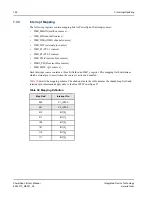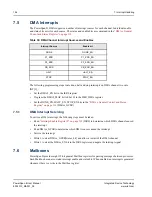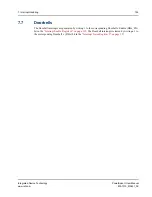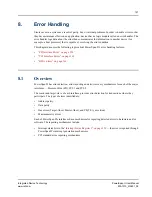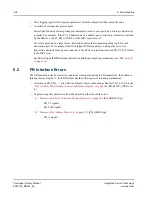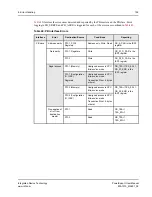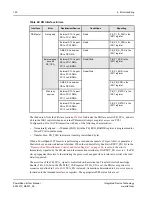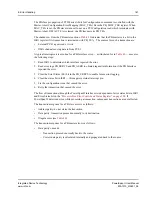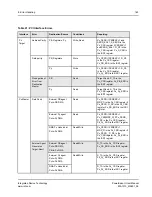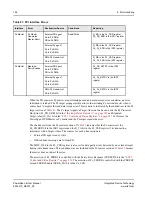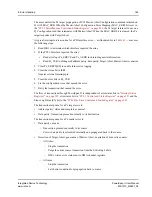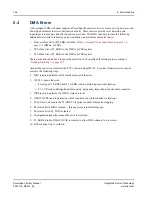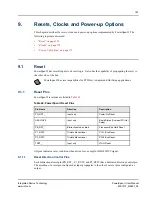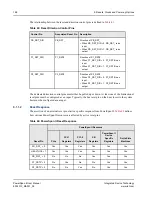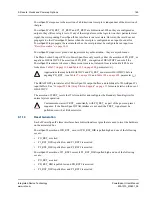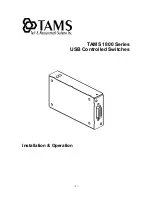
157
PowerSpan II User Manual
80A1010_MA001_09
Integrated Device Technology
www.idt.com
8. Error
Handling
Errors occur in a system as a result of parity, bus, or internal problems. In order to handle errors so that
they have minimum effects on an application, devices have a logic module called an error handler. The
error handler logs data about the error then communicates the information to another device (for
example, a host processor) that is capable of resolving the error condition.
This chapter discusses the following topics about PowerSpan II’s error handling features:
•
“PB Interface Errors” on page 158
•
“PCI Interface Errors” on page 162
•
8.1
Overview
PowerSpan II has error detection, error reporting and error recovery mechanisms for each of the major
interfaces
—
Processor Bus (PB), PCI-1 and PCI-2.
The master and target/slave of each interface provides error detection for transactions where they
participate. The types of errors identified are:
•
Address parity
•
Data parity
•
Bus errors (Target-Abort, Master-Abort, and PB_TEA_ assertion)
•
Maximum retry errors
Each of PowerSpan II’s interfaces has a mechanism for reporting detected errors to hardware and/or
software. The reporting mechanisms include:
•
Interrupt status bits in the
“Interrupt Status Register 1” on page 329
—
the error is reported through
PowerSpan II’s interrupt generation mechanisms
•
PCI standard error reporting mechanisms

